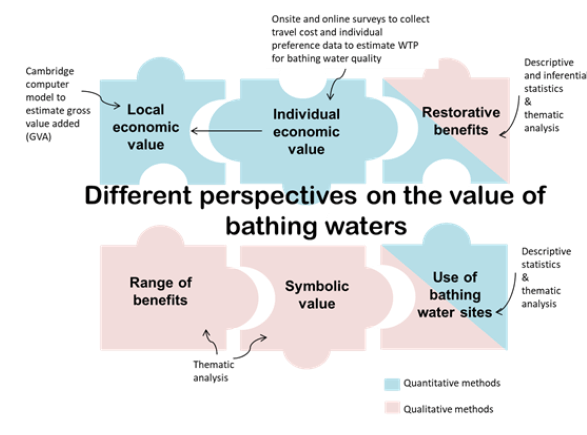Value of bathing waters and influence of bathing water quality: research findings
Research aimed to provide socio-economic understanding of the value of Scottish bathing waters and the influence of bathing water quality (BWQ) to bathers, beach users and to the national and local economies.
Context for the research
The European Union ( EU) revised Bathing Waters Directive ( rBWD) (2006/7/ EC) requires member states to monitor, classify and manage bathing waters and provide information to members of the public on BWQ. Bathing waters are defined in the rBWD as " any element of surface water where the competent authority expects a large number of people to bathe" [1] . Sites are assessed against bacteriological quality standards and classified as either: ‘excellent’; ‘good’; ‘sufficient’; or ‘poor’.
The rBWD requires member states to achieve a bathing water classification of ‘sufficient’ and above for their designated sites. A critical provision within the rBWD means that sites classified as ‘poor’ over five consecutive years can receive a ‘permanent advice’ against bathing, with potential implications for the uses, activities and benefits provided / supported by the site. Scotland has 86 designated bathing waters. In the most recent bathing water classifications (2017/18), 11 of these sites were classified as ‘poor’.
The challenge of implementing the rBWD lies in balancing the costs to stakeholders (i.e. the water industry, the agricultural sector, other economic sectors and the general public) of maintaining BWQ classification at ‘sufficient’ and above at a designated bathing water site against the costs of not maintaining ‘sufficient’ status. A status less than significant may lead to costs such as loss of tourism revenue and drop in informal recreation if visitors are put off by lower water quality and, in particular, permanent advice against bathing. These costs are less well understood than the costs of maintaining BWQ. This is because: (i) the range and (monetary) value of benefits provided by bathing waters is not fully understood; and (ii) it is not known how members of the public would respond to permanent advice against bathing. These are the key gaps that were investigated in this research project.

Figure 1: Relationship between different perspectives on the value of bathing water and methods for their investigation
Contact
There is a problem
Thanks for your feedback